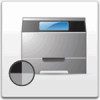Lexmark Monochrome Laser Complete Printer Reference (1.7 MB) - Page 184
Parallel Menu settings, Parallel cable specifications
 |
View all Lexmark Monochrome Laser manuals
Add to My Manuals
Save this manual to your list of manuals |
Page 184 highlights
Unlike Nibble and Byte mode, once ECP mode is established between the host and the printer, it is not broken until the host or the printer fails in some way. This allows for a greater transfer speed, since the parallel port never returns to unidirectional compatibility mode, which would create the need for negotiating a new bidirectional transmission. Parallel Menu settings The following table briefly describes the print settings affecting parallel communication. For information on changing settings and details on other printer settings, see "Changing printer settings" on page 27. Parallel Menu Menu item Protocol Advanced Status NPA Mode Function This menu item determines how the printer functions when in compatibility mode. Setting the printer to either Standard or Fastbytes mode does not affect the bidirectional settings. Set this menu item to On when you are using bidirectional communication; it enables the IEEE 1284 capabilities on the printer. When you set Advanced Status to Off, no bidirectional communication occurs. When you set NPA Mode Off, the printer does not process incoming NPA packets. Auto means that the printer receives and processes NPA packets; in other words, NPA communications protocol is enabled. In addition, the printer processes all PostScript and PCL emulation jobs. When you set NPA Mode On, the printer receives and processes NPA packets only. It does not process any other form of data, such as PCL or PostScript emulation. We do not recommend setting NPA Mode On. Parallel cable specifications Be sure you use an IEEE 1284 compliant cable. After checking all of the settings, if your printer won't operate in bidirectional mode, check the parallel cable. Some lower-cost parallel cables may not have all of the parallel signals physically connected in the cable. Connectivity and network management 184















